Why creativity and imagination will save the world

At the Breakthrough Sessions 2024, George Hedon, Founder of Pause Fest & Awards, hosted an in-depth conversation with Rose Herceg, President of WPP Australia and New Zealand about the global state of creativity.
Known for her dynamic approach to business and unyielding fight against mediocrity, Herceg shared her philosophy on creativity, its measurement, and its application in leadership and business. She explored the evolving nature of the creative industry, the growing influence of AI, and the challenges of maintaining quality in a hybrid work environment. Herceg also provided a glimpse into her predictions for the future of creativity and how leaders and organisations can adapt.
Defining Creativity by Staying Uncomfortable
When asked about her definition of creativity, Herceg was clear: “Creativity is the world’s greatest tool for solving problems.” For her, creativity is not just about artistic expression but a strategic lever for business growth and societal change. She emphasised that creativity must be intentional and integrated into leadership strategies to drive progress. “It’s the imagination and lateral thinking that push boundaries, transform industries, and set businesses apart.”
In applying creativity to leadership, Herceg highlighted the importance of authenticity. “Originality is when an idea makes you nervous—when it’s so bold, it makes you uncomfortable.” This discomfort, she believes, is a sign of true innovation, and it’s essential for leaders to embrace it to stay ahead.
Herceg argues that while creativity is often seen as an abstract concept, its impact is tangible when measured through business performance. “When creativity is done right, it drives sales, increases share prices, and elevates market cap,” she explained. She cited companies like Apple and Amazon as examples where creativity has not only led to innovative products but also to immense financial success. By focusing on measurable business outcomes, Herceg believes creativity’s value becomes evident, bridging the gap between imagination and profitability.
When asked about why she fights so hard against mediocrity, Herceg was firm in her stance. “There’s a lot of average out there—vanilla ideas that have been done before. To innovate, we need to fight against taking the obvious road,” she stated. For Herceg, creativity is about pushing beyond the mundane and striving for originality, even when it’s uncomfortable. “When you smell an idea that’s original, it should make you nervous. That’s when you know you’ve hit something authentic.” She believes that mediocrity holds businesses back and that leaders must create environments that foster bold thinking and risk-taking to achieve true innovation.
Addressing the competition between content creators and agencies, Herceg was asked how ad agencies compete in an age where content creators are increasingly influential. “Like any content, the best content rises to the top. There’s a lot of content out there, but not all of it is good. Good is good, and not very good is just noise,” she explained. She emphasised that originality and quality are the true measures of success, regardless of who produces the content. “The concern about the fight for content is defined by the same measure as it is for all content—truly original, imaginative content will rise to the top, and everything else will just be noise.” By maintaining a focus on excellence and authenticity, Herceg believes agencies can continue to thrive and set themselves apart in a crowded and competitive landscape.

Agency Model in a Hybrid and AI World
With the rise of remote and hybrid work models, Herceg addressed the challenge of maintaining high-quality creative work. “Creativity doesn’t thrive in isolation; it requires interaction, spontaneity and energy,” she explained. Despite the flexibility of work-from-home (WFH) arrangements, she emphasised the value of in-person collaboration. “At WPP, most of our teams are back in the office full-time. It’s essential for young talent to experience the buzz and inspiration that come from working closely with others.”
However, she acknowledged the need for balance and flexibility, understanding that occasional remote work is sometimes necessary. Her focus is on creating an environment that maximises creativity while accommodating the diverse needs of a modern workforce.
Herceg recognised AI’s growing influence in the creative industry but remained confident in its role as a tool rather than a replacement. “AI automates the repetitive, freeing up time for us to focus on the big ideas that change the world,” she said. She pointed to WPP’s intelligent marketing operating system powered by AI, WPP Open, which is designed to integrate with any client, partner or technology vendor to create optimised and automated marketing capabilities, as well as streamline creative processes. Herceg emphasised that AI has the potential to enhance, not replace, human creativity.
“AI lacks the cultural intuition, the lived experiences, and the instinct that humans bring to the table. No AI can replicate the way my synapses fire based on my heritage, upbringing, and worldview,” she argued. She sees AI as a means to elevate human creativity, rather than diminish it, by taking over mundane tasks and allowing more time for imagination and strategic thinking.
Herceg addressed the challenge of staying relevant as AI adoption accelerates, with tools like Canva empowering users and AI transforming industries. “It’s not about competing with AI; it’s about leveraging it,” she explained. Agencies must evolve, becoming strategic partners that use AI to enhance their offerings while focusing on what AI cannot do—crafting unique, culturally resonant stories.
Herceg proposed a future where agencies have dedicated roles such as ‘Scenario Designers’ or ‘Chief Imagination Officers,’ whose sole job is to envision and strategise future scenarios. “Every organisation should have people whose job is to imagine and plan for the unthinkable,” she suggested, highlighting the importance of creativity as a strategic advantage in an AI-powered world.
Global Trends and 2025 Predictions
Reflecting on 2024, Herceg noted several trends shaping the global creative landscape. One major shift is the recognition of creativity’s financial value, with chief marketing officers (CMOs) gaining a more influential role in boardrooms worldwide. “In the US, marketers are being seen as revenue drivers and are finally taking their seat at the table,” she observed. She hopes to see similar developments in Australia, where the connection between creativity and profitability is gaining traction.
“If I look at the United States, 51 cents of every dollar. In the United States comes from the ideas economy, Hollywood, Microsoft, Netflix, Facebook, Amazon, Google in Australia, that number is 7 cents. So America has created the greatest export economy with the ideas economy, which is creativity and imagination,” Herceg added.
Another trend she emphasised is the rise of unconventional creativity. “The most creative solutions are often coming from unexpected places—our finance teams, young interns, and new hires who don’t know what isn’t possible yet,” she shared. These fresh perspectives are critical for keeping creativity dynamic and relevant.
Herceg highlighted campaigns that have profoundly impacted her view of creativity, such as the “Morning After” campaign by Ogilvy, which challenged legislation and drove societal change. “When a campaign can change the law, that’s creativity at its finest,” she declared. Other notable mentions included WPP’s use of AI in the “Serena vs. Serena” campaign and work that has directly influenced business practices, like MasterCard’s data-driven support for Ukrainian refugees.

Looking ahead, Herceg made three bold predictions for 2025:
- Increased Integration of AI and Creativity: As AI tools become more sophisticated, she expects agencies to integrate AI deeper into creative processes, freeing teams to focus on innovation and storytelling.
- Rise of ‘Imagination Officers’: More organisations will hire roles dedicated to scenario planning and imaginative thinking, transforming how businesses approach strategy and innovation.
- Shift Toward Hybrid Work Models: While she remains a proponent of in-office creativity, Herceg predicts a balanced approach where agencies blend physical and digital spaces to optimise collaboration.
In the next five to ten years, Herceg envisions a world where creativity is embedded in every aspect of business. “It’s no longer an option; it’s a necessity,” she stated. Creativity will be the driving force behind innovation, economic growth and societal progress.
Advice for Creative Leaders to focus on Solving Global Problems
Herceg is a firm believer in creativity’s potential to build trust and drive change. “The best creativity solves problems and predetermines actions,” she explained. By providing solutions, creativity builds credibility, transforming relationships between brands and consumers. She also emphasised the need for creativity to tackle pressing global issues such as climate change, economic inequality and social justice. “Creativity is the key to unlocking solutions for the world’s biggest challenges.”
Herceg concluded with advice for creative leaders, especially those over 40 seeking their next chapter. “In the age of AI, leaders must stay open to new possibilities and focus on connecting the dots. There’s always a solution—you just have to see the whole chessboard.” She urged leaders to say ‘yes’ more often, embrace collaboration, and continue exploring new avenues for growth and innovation.
When asked about her global favourites, Herceg named Apple as her most admired company for its consistent innovation and brand integrity. She praised Netflix for reinventing itself and championed Bob Hawke as an example of a creative leader who transformed Australia’s political landscape. Her favourite creative city? “Tokyo—pound for pound, it’s the most inventive city in the world.”
Herceg’s insights at the Breakthrough Sessions illuminate the power of creativity as a strategic force. As AI evolves, businesses face economic shifts, and societal challenges intensify, creativity remains the essential lever for transformation. For leaders and organisations, embracing creativity is no longer optional; it’s the path forward.



Related posts

Visionary Behind the Bionic Ear Honoured in 2024 Pause Awards Hall of Fame
3 December, 2024

Australia’s boldest innovators announced and new chapter for 2025
3 December, 2024

Top five winners score the most invaluable encounter
19 November, 2024

How Ally Watson is pioneering tech careers for women
15 November, 2024

Breakthrough Insights, Strategies, Creativity and Culture for now
12 November, 2024

Life lessons on ownership and how to keep creative control
6 November, 2024

How to unlock the intangible in brand equity with 4P’s
29 October, 2024

Discover trailblazing Finalists of Pause Awards 2024 in Australia
28 October, 2024

Why Bunnings feels like home: trust, community and genuine care
23 October, 2024

How Canva transformed a simple idea to become global leader
15 October, 2024

How NASA’s new AR tech will take astronauts to the next frontier
11 October, 2024

How to build authentic workplace culture
7 October, 2024

How to balance business growth with personal wealth
24 September, 2024

A time to dream big with Kristina Karlsson
16 September, 2024

The purpose of gatekeepers in authentic brand storytelling
6 September, 2024

It’s here, a final call to enter the Pause Awards this year
3 September, 2024

Join a free 7-week online learning on the go
3 September, 2024

Pause Awards partners with Ticker for exclusive broadcast coverage
6 August, 2024

Calling Melbourne — a significant player to enter!
6 August, 2024

Calling Hobart — an emerging hub to enter!
26 July, 2024

Calling Canberra — with most daring new ideas to enter!
16 July, 2024

Meet final judges and why they love Pause Awards
15 July, 2024

Meet even more judges and why they love Pause Awards
8 July, 2024

Meet more judges and why they love Pause Awards
5 July, 2024

Calling Adelaide — dynamic centre for innovation to enter
4 July, 2024

Meet the judges and why they love Pause Awards
1 July, 2024

Maybe those shouldn’t have been there in the first place
27 June, 2024

Calling Perth — an emerging innovator to enter!
25 June, 2024

Read a thrilling mid year predictions by the judges
24 June, 2024

Jasmine Batra’s Breakthrough Moment
24 June, 2024

WithYouWithMe’s Breakthrough Moment
24 June, 2024

Paz Pisarski’s Breakthrough Moment
20 June, 2024

UpStock’s Breakthrough Moment
20 June, 2024

Calling Brisbane — a rising star to enter!
19 June, 2024

How to choose the right category for the Pause Awards?
17 June, 2024

Success stories of past Pause winners
17 June, 2024

Your guide to the Pause Awards entry process
17 June, 2024

Understanding the breakthrough question
17 June, 2024

Top 10 tips on how to enter Pause Awards
17 June, 2024

Calling Sydney — a powerhouse of opportunity to enter!
6 June, 2024

Inke’s Breakthrough Moment
6 June, 2024

ReSource’s Breakthrough Moment
3 June, 2024

Brittany Garbutt’s exchange with Paul Bassat on building and sustaining a business empire
21 May, 2024

Entering Pause Awards for the first time?
21 May, 2024
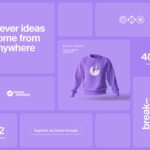
Inside the Pause Awards 2024: A universe of possibility
14 May, 2024

What’s a Pause Awards breakthrough?
14 May, 2024

Marcella Romero’s Breakthrough Moment
9 May, 2024

Music Health’s Breakthrough Moment
2 May, 2024

Chau Le’s Breakthrough Moment
30 April, 2024

Tanck’s Breakthrough Moment
26 April, 2024

Macro Mike’s Breakthrough Moment
23 April, 2024

Birchal’s Breakthrough Moment
18 April, 2024

Tixel’s Breakthrough Moment
16 April, 2024

Redefining success with Angus and Neil of Tanck
15 April, 2024
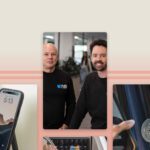
Quad Lock’s Breakthrough Moment
12 April, 2024

Origin Energy’s Breakthrough Moment
10 April, 2024

Mel Stubbing’s breakthrough moment
5 April, 2024

Brittany Garbutt’s breakthrough moment
2 April, 2024

InvestorHub’s Breakthrough Moment
28 March, 2024

Kollektive’s Breakthrough Moment
26 March, 2024

Talking robots and AI Agents, two insane demos
25 March, 2024
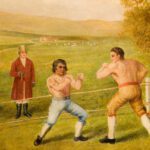
Fight Club and Zombie VCs
25 March, 2024

WeMoney’s breakthrough moment
20 March, 2024

Addressing gender inequality with 21.7% discount for female-led companies
8 March, 2024

How Entertainment Brands are winning hearts and minds
5 March, 2024

2023 packed a punch
17 January, 2024

The power of relationships with Dom Pym at Pause Awards Night
19 December, 2023
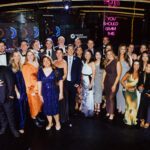
Six years of celebrating the Australian most ambitious innovators
5 December, 2023

M&A green shoots & scandal central
10 November, 2023

Announcing the 63 ambitious finalists, 3 winners and Pause Awards Night
30 October, 2023

Can optimism and curiosity win the battle with Ai
20 October, 2023

Looking at 100 years from now in Solar, EVs and MedTech
20 October, 2023
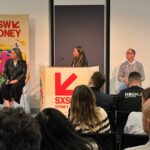
What does the Australia’s VC landscape look like in 2050
19 October, 2023
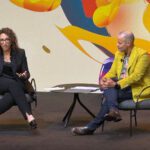
Do we want to live in a Black Mirror world?
17 October, 2023
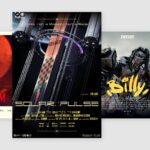
Four new emerging directors envision sustainable future beyond 2050
6 October, 2023

Visible Founders puts a spotlight on migrant entrepreneurs
28 September, 2023

Always be closing & IPO, no?
24 September, 2023
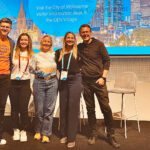
Strong commitment needed to run tech events in Australia revealed at GEC23
24 September, 2023

iPhone 15 event: everything about Apple’s new product line
14 September, 2023

Discover the colourful world of oral hygiene with Dsmile’s new range
13 September, 2023

How to build a company culture in dynamic market
8 September, 2023

The valuable startup lessons hidden in the film Oppenheimer
7 September, 2023

Meet the new addition to the Judging Board ‘23
4 September, 2023

Advice on Design Thinking for stellar product development
1 September, 2023

How Pause Awards can put your brand on the map
30 August, 2023

Seize the moment: New Extended Entry Deadline
30 August, 2023

I got 99 problems
26 August, 2023

Is AI the new frontier of creativity and business
25 August, 2023

Tech legends unite to guide growth and foster innovation
22 August, 2023
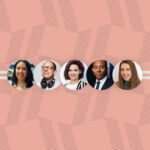
The new faces of Pause Awards in business and the product officers
21 August, 2023

Don’t miss out on the last chance to join champions
21 August, 2023

Experience is a new frontier for brands
18 August, 2023

How to grow an idea into a great product
11 August, 2023

Good storytelling and trust will fuel startup and brand growth
4 August, 2023

Twitter to X: a rebrand to challenge tech giants and empower users
4 August, 2023

Discover the latest tech predictions of 2023
1 August, 2023

Elevate your business with Stephen Hunt’s success secrets
31 July, 2023

Lean into digital marketing trends now and in 2024
28 July, 2023

The new faces of Pause Awards from agency and media innovation
25 July, 2023

Hit it, DJ! and other local newsings
24 July, 2023

Female-led ethical fintech Verve raises $3M for Verve Money
21 July, 2023

How to better tune into your success journey
21 July, 2023

Pause Fest’s BREAK–THROUGH SESSIONS will keep you scaling
12 July, 2023

How to choose the right awards for your business
5 July, 2023

The new faces of Pause Awards in strategy and leadership
4 July, 2023

We’re building the community for the most ambitious people
27 June, 2023

It was worth waiting for these unique features
26 June, 2023

Mapping the future of fit and function
23 June, 2023
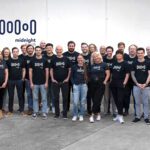
Midnight Health secures $24 million funding boost
21 June, 2023

Championing breakthroughs in today’s business world
21 June, 2023

OpenAI’s Sam Altman says hai
19 June, 2023

Top 5 compelling reasons why you should enter
18 June, 2023

Pause Awards vs Webby’s, Cannes Lions and Effies
18 June, 2023

The new faces of Pause Awards in startup, product and experience
15 June, 2023

A tour of 11 new categories
12 June, 2023
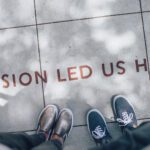
Inside out of Pause Awards
5 June, 2023

Aim for the Diamond: Understanding the Different Categories
1 June, 2023

The new faces of Pause Awards in strategy, growth and innovation
30 May, 2023

Where business recognition gets a paradigm shift
24 May, 2023

Industry leaders predict a transformative year ahead
17 May, 2023

Pause Awards grows to $412 Billion ecosystem
17 May, 2023

Shaking it up with new Investable Score™
17 May, 2023

Tap into your inner powerhouse
5 May, 2023

Life in the fast (tech) lane
24 April, 2023

evee rides the electric wave
18 April, 2023

Big win for the female-led business Circle In, lands $2 Million
14 April, 2023

Designing global empires:
How local brands can conquer the world
10 April, 2023

A passionate pursuit for Healthcare reinvention
4 April, 2023
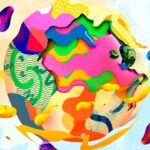
The game-changing sessions at SXSW Sydney
30 March, 2023

Top AI tools you need to try now
29 March, 2023
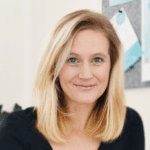
A journey to revolutionising healthy school lunches
28 March, 2023
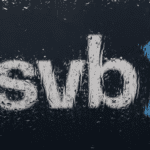
Panic! at the SVB & metrics that matter
16 March, 2023
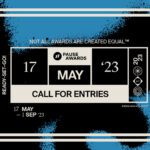
Call for Entries
opens on 17 May ‘23
1 March, 2023

Startup funding in decline, but early-stage hits peak in Aus
10 February, 2023

Music for wellbeing:
The healing power of sound
20 January, 2023

Deep dive with ChatGPT about Aussie tech ecosystem
17 January, 2023

How it started; How it’s going 2022
17 December, 2022

Learning from mistakes and how to tackle the upcoming headwind
14 December, 2022

Claiming your PauseNFT trophy
13 December, 2022

Women and purpose led businesses take the most wins at Pause Awards ‘22
6 December, 2022

Professor Fiona Wood – The pioneer of ‘Spray-on-Skin’ technique, ReCell.
6 December, 2022
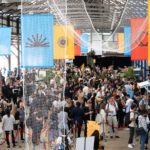
Rise and Demise
28 November, 2022

Let’s have breakfast with champions?
15 November, 2022

82 Bold Finalists Announced for the Pause Awards ‘22
10 November, 2022

Judge Sessions with Lumigo, Tribal DDB and Clipboard Hospitality
24 October, 2022

Judge Sessions with LongView, Fullstack and Art Processors
20 October, 2022

The first look at the new wearable trophy design
13 October, 2022

The Public Voting is open, go get them!
10 October, 2022

Cash to splash & other VC news
2 October, 2022

The Final Deadline Extended to midnight 14 October
30 September, 2022

Judge Sessions with Wavia, SEIKK and MedTech Actuator
26 September, 2022

Pause Awards Wins Australia’s International Good Design Awards for Design Excellence
19 September, 2022

Judge Sessions with Synergy Group, AOK Creative and i4 Connect
16 September, 2022

A word with Birchal’s Co-Founder – Matt Vitale
6 September, 2022

What can Pause Awards bring to your company
30 August, 2022

Google, Synergy Group, Spaces Interactive, Safari and By Jacs judges for Culture categories
24 August, 2022

Loyal VC, Media.Monks, AOK Creative, Storyfolk and Irene Lemon judges for Good categories
15 August, 2022

Fullstack, Lumigo, Netambition, MedTech Actuator and Unhedged judges for Operators categories
10 August, 2022

A word with Heaps Normal’s Head of Brand – Peter Brennan
9 August, 2022

Tribal DDB, We Are Unity, Bullfrog, BeautifulAgile and The Audacious Agency judges for your Excellence
2 August, 2022

Simply Wall Street, IBM, Forestlyn, CFOWorx and Accenture Song are this year Growth Judges
1 August, 2022

Venture snapshot: down but not out
26 July, 2022

Best equity crowdfunding year in Australia – $86m!
22 July, 2022

How to navigate the awards Entry Portal?
14 July, 2022

Startup Genome ecosystem report 2022 review
10 July, 2022

We’re giving a voice to our community with a stylish newsroom design
10 July, 2022

Professor Martin Green
– The father of solar cells
10 July, 2022

Dr John O’Sullivan
– The inventor of modern WiFi
10 July, 2022

14 New award categories under five tracks to highlight the ecosystem success
5 July, 2022

M&A on the rise & the EV SPAC demise
29 June, 2022

Our new vision:
The home for champions
27 June, 2022

Awards LIVE Briefing and Entry Kit
22 June, 2022

The Porsche of awards programmes with community at its heart
21 June, 2022

The Sheet Society
– Success Stories
17 June, 2022

We’re looking for our final few judges – could you be one?
8 June, 2022

Single Use Ain’t Sexy
– Success Stories
1 June, 2022

Afterpay
– Success Stories
24 May, 2022

This is how we celebrate innovation champions
15 December, 2021

The most ambitious and forward-thinking companies in Australia revealed
24 November, 2021

Pause Awards 2021 Finalists Skyrocket
17 November, 2021

Final Deadline is Looming
1 September, 2021

Get to know:
Carolyn Breeze – Judge
24 August, 2021

Get to know:
Will Hayward – Judge
17 August, 2021

Get to know:
Shamila Gopalan – Judge
10 August, 2021

Get to know:
Tom Leyden – Judge
3 August, 2021

Get to know:
Jules Brooke – Judge
26 July, 2021

Get to know:
Jamie Finnegan – Judge
18 July, 2021

Early Entries end This Week
12 July, 2021

Need Help Entering Pause Awards?
6 July, 2021

2021 Award Category Guide
1 July, 2021

How to Enter The Pause Awards in 7 min?
25 June, 2021

Get to know:
Melanie Rayment – Judge
24 June, 2021

Past winners:
where are they now?
24 June, 2021

Pause Awards 2021 opens for entries
9 June, 2021

New categories revealed for Pause Awards 2021
5 June, 2021

Meet the Judging Board 2021
13 May, 2021

The Reign in the North
1 February, 2021

What went into creating Vincent, a hyper-real digital human
21 January, 2020

Dane O’Shanassy on Patagonia’s moral compass and commercial success
6 November, 2019
Pause index

Byron Scaf
Do You Know Who I Am

Pyn
Defiant Ones

Mark Brownlee
Do You Know Who I Am

TernX
I Wish I'd Done That, Design First

Time Under Tension
Singularity
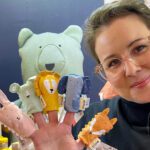
Melinda Farley
Women In Business

ettitude
Going Green

LunchFox
I Wish I'd Done That

AECO Energy
Going Green

Jordan Shreeve
Future Builder

Chau Le
Women In Business


